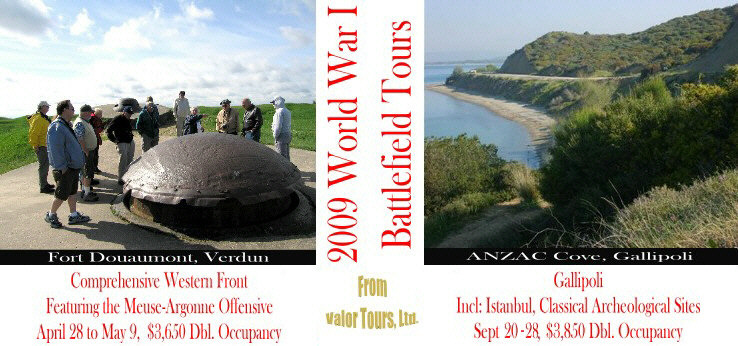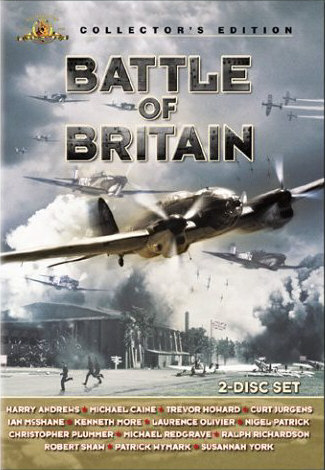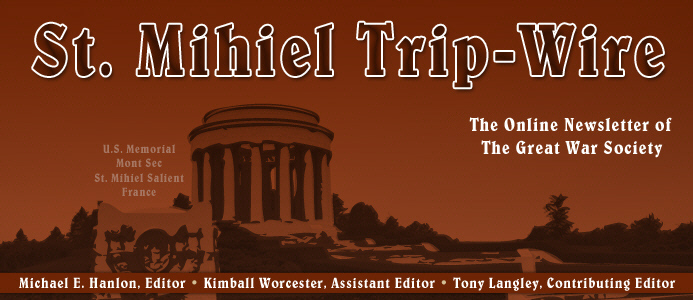

TRENCH REPORT: Surprise! We now have a new look. Please tell us what you think. Besides the aesthetic changes you will see some additions to our masthead. My fellow editors Kimball Worcester and Tony Langley are now listed. The three of us comprise the same team that has published the subscription magazine Over the Top, and have just assumed responsibility for the quarterly journal of The Great War Society, Relevance. Also, you will see that we have renewed our formal association with The Great War Society. We will, however, continue to support our sister WWI organizations, especially the WFA-USA with whom we are joining forces this year to present the annual seminar at the National World War I Museum in Kansas City, Missouri. Hope to see you there. We are anticipating having an informational table at the event. MH
This Month's Internet Feature
Admiral John R. Jellicoe
Biographical Sketch
After Action Report of Jutland
1919 Memoir: The Grand Fleet
Model of HMS Iron Duke, Jellicoe's Flagship at Jutland
E-Card Portrait of JRJ from the National Maritime Museum
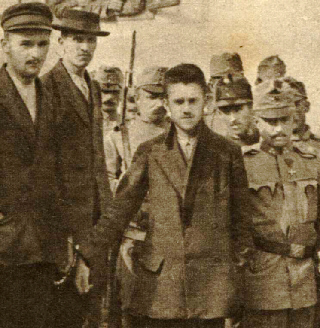
Gavrilo Princip in Custody Sometime After the Assassination
New at Our Own & Our Friends' Great War Websites
Click on Title or Icon to Access
|
At Great War Society Sites
The Board of The Great War Society has decided to make a major outreach to the genealogical community, particularly those families researching their relatives who served in the war. We have just upgraded our genealogical Internet site. In the summer we plan major additions to be initially published in our journal Relevance and subsequently added to the website.
At the WFA-USA
|

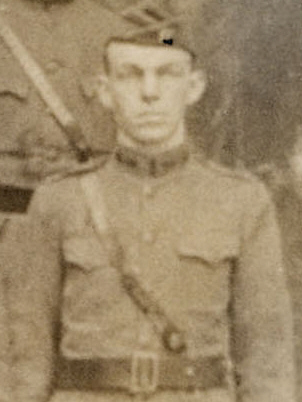
You experience the work of this WWI veteran almost every day. Who is he and how did he help shape our modern world? (Answers at the bottom)
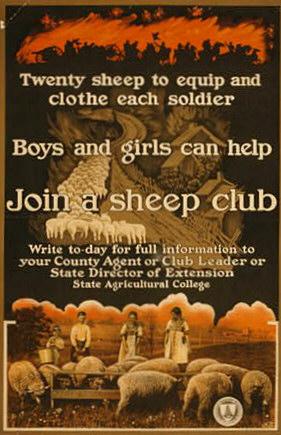
Those Poster Makers of WWI Got into Everything

On the 17th, at ten o'clock in the morning, the Boches started to bombard us with large caliber shells for ten hours. It was enough to drive you mad. We were buried alive my entire squad; but miraculously, all seven of us emerged without a scratch but of the five unluckily [sic] ones who came and took refuge with us in our dugout, two were killed and three were wounded.
Letter by a soldier of the 311th French Infantry Regiment at Verdun, June 1916.
Quoted by O'Brian Brown.
|
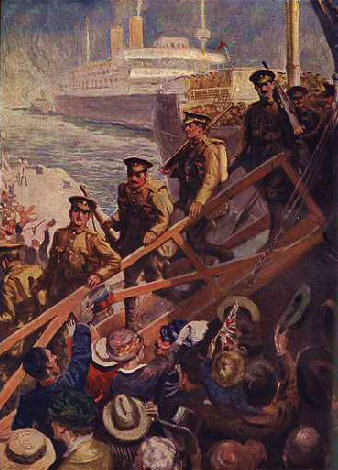
Kitchener's Men Arrive in France
|
GREAT WAR 2009 EVENT CALENDAR
|
Western Front Association-U.S.A. &
The Great War Society
Combined 2009 Annual Seminar,
September 11 - 13, 2009
National World War I Museum
Kansas City, Missouri
The wide-ranging and compelling theme for the seminar combines the original seminar ideas for both organizations: "Technology, Treaties and the War: From 'Tin Hats' to Tanks and 'Top Hats' to Territories." Registration forms, fees and further information will be forthcoming. Check back here or at the organizations' websites for details. (link)
|
Western Front Association
U.S. Branch Chapter Meetings
Check for Your Region
Regularly Updated (details)
|
Great War Society Monthly Chapter Meetings
Berkeley, San Francisco and Palo Alto, CA
Regularly Updated (details)
|
Upcoming Events at the National World War I Museum
Kansas City, Missouri
Regularly Updated (details)
|
Send additions/corrections:
Email Response
|
 Memorable Event
Memorable Event
|
Formation of First
Fascio di Combattimento
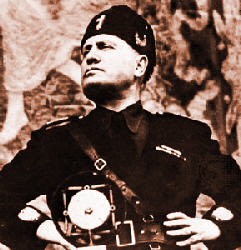
March 23, 1919
Mussolini's First Step Towards
A Fascist Party in Italy
Click on Image to Read Mussolini's Own Description of Fascism
|
|

Our Favorite WWI Mystery Novelist Jacqueline Winspear with Her New Maisie Dobbs Novel Among the Mad
At the Flanders Fields Museum
Our favorite trench art collector, Jane Kimball, will be one of the expert panelists April 17-19, 2009 at the conference: "Collecting War. Trench art and souvenirs. Representation and manufacture."
At the Imperial War Museum
The Imperial War Museum has a 90th-anniversary exhibition on until the end of September 2009. Details including an overview of their collections at
www.iwm.org.uk/90. Special exhibits includes the wreath tossed into the car carrying Prime Minister David Lloyd George after the signing of the Treaty of Versailles, the smashed aircraft windscreen of Maj. James McCudden, VC, DSO & Bar, MM and Gavrilo Princip's gun, which was rediscovered in 2004.
In next month's issue of OVER THE TOP magazine, Ph.D. candidate Anatole Sykley tells the story of his adopted city, Boston, Massachusetts, during the Great War.
|
The French National Memorial and Cemetery
Notre Dame de Lorette
|

Located in Artois within view of Vimy Ridge, the memorial is situated on a site of desperate fighting for a full year, October 1914 - October 1915. Over 45,000 burials are located here. Wintertime photo by Christina Holstein, who has been busy but will be contributing again to future Trip-Wires.
|
|
|
Page Two
|
|
|
Uniform Series
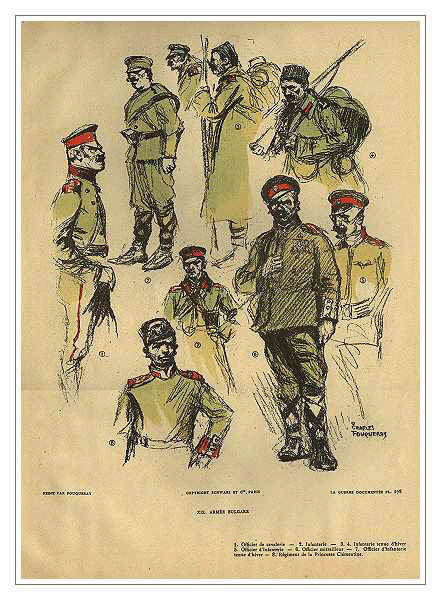
Bulgarian Army Uniforms
|
The Chaplains of the AEF
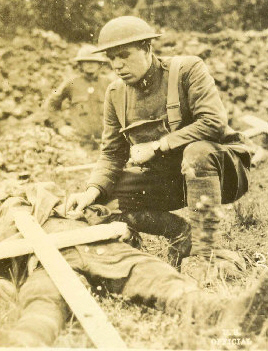
33rd Division Chaplain
Identifying the Dead |
The U.S. Army Chaplaincy was to be an integral part of the great mobilization of the American Expeditionary Force. By the end of the war the original 74 Regular Army chaplains and 72 National Guard chaplains had been joined by 2,217 more chaplains. Twenty-three of these chaplains died in the service of their country during this conflict -- 11 of them were battle deaths. Twenty-seven chaplains earned the Purple Heart, four with Oak Leaf Cluster. Twenty-seven chaplains earned the Distinguished Service Cross and 18 the Silver Star. France, Great Britain and Belgium also decorated American chaplains.
Chaplain Julius J. Babst's DSC citation exemplifies not only his actions but those of other chaplains as well.
Chaplain Babst displayed exceptional, bravery and devotion to duty by repeatedly going out from the first aid station of his battalion to care for the wounded and voluntarily exposed himself to terrific artillery and machine gun fire to administer the last sacraments to the dying. At imminent risk to his own life he worked to improve the conditions at the aid station and fearlessly conducted burial services under fire.
Another chaplain, Coleman E. O'Flaherty, awarded the DSC posthumously, was eulogized by his commander, who said that the initial letters of the award really meant, "Died in the Service of Christ." The most famous chaplain to serve in World War I was Francis P. Duffy, a Roman Catholic priest from New York. Chaplain Duffy, whose statue stands in Times Square, NYC, was the senior chaplain of the 42nd Division. Before his unit went into battle, Chaplain Duffy always conducted services. He observed special holy days, even on the battlefield.
Once the fighting started, the sermons stopped. Chaplains, like Duffy, "traveled with the unit first aid stations and provided physical and spiritual care to the wounded and dying. They worked closely with the other noncombatants: the surgeons, ambulance crews, and stretcher-bearers." From the Web site of the U.S. Army Chaplain Service
|
|

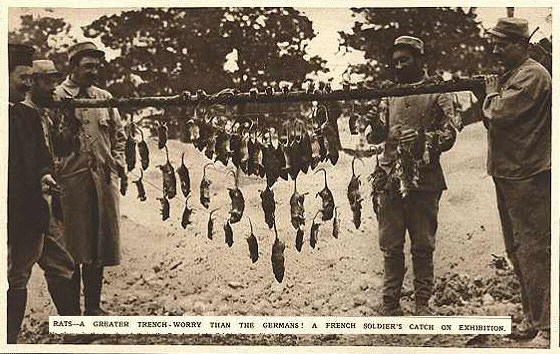
(We Have Neglected Presenting Our Popular Rat-Catchers Series Lately. Sorry. MH)
Click Here to Visit the Web Site of Our Contributing Editor Tony Langley
War in a Different Light
|
|
Subscribe to Our On-Line Magazine
|
|

|
|
|
Page Three
|
|
|
2009 World War I Tours Led by
Trip-Wire Editor Mike Hanlon
Click on image to request a brochure from greatwar@earthlink.net
|
|
|
Two Rather Unheathly Aspects of
the Great War
|
What Is Trench Fever?
Trench Fever is a louse-borne disease first recognized in the trenches of WWI that is still seen endemically in Mexico, North Africa, Eastern Europe and elsewhere. The cause, a bacterium now known as Bartonella quintana, is an unusual agent that multiplies in the gut of the body louse. Transmission to people can occur by rubbing infected louse feces into abraded (scuffed) skin or conjunctiva (whites of the eyes), or at one of the five times daily the body louse feeds.
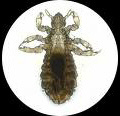
Body Louse,
aka Cootie |
Onset of symptoms is sudden, with high fever, headache, back and leg pain and a fleeting rash. Recovery takes a month or more. Relapses are common. It is known by other names such as, Wolhynia Fever, Shin Bone Fever and Five-day Fever.
It is estimated that over one million people experienced the disease during the war. Although debilitating and recurrent, it is considered a nonfatal disease. It has recently been discovered reemerging among urban homeless in the U.S. and Western Europe, so delousing of clothing and bedding is now required at some shelters.Compiled from the Online Medical Dictionary & other websites.
|
|
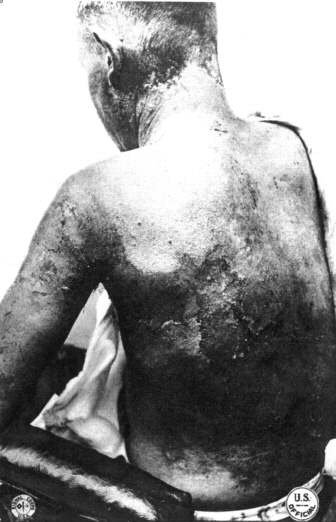
Mustard Gas Victim |
Dichlorethylsulphide: the most dreaded of all chemical weapons in World War I - mustard gas. Unlike the choking gases chlorine and phosgene, which attack the respiratory system, this gas acts on any exposed, moist skin. This includes, but is not limited to, the eyes, lungs, armpits and groin. A gas mask could offer very little protection. The oily agent would produce large burn-like blisters wherever it came in contact with skin. It also had a nasty way of hanging about in low areas for hours, even days, after being dispersed. A soldier jumping into a shell crater to seek cover could find himself blinded, with skin blistering and lungs bleeding.
Mustard gas, unfortunately, was militarily useful. Late in the war it very frequently happened that all areas lateral to the point of attack were neutralized by a saturating fire of mustard gas. Reserve troop concentrations in the rear of such points of attack, villages near the scene, roads, wooded areas, ravines, reverse slopes, and other strong points not intended to be occupied by the enemy were also shelled with it. In some instances, when an enemy attack failed and an orderly retreat could be made, mustard gas was used to assist in covering the retreat. It also disabled soldiers, who also required medical aid and hospitalization further draining the manpower of the opposition. Of the chemical agents employed by the Germans against the Allies, mustard gas was responsible for 39% of AEF gas casualties.
Once mustard gas made contact with the skin, it destroyed tissue as long as it remained, doing damage several hours before the first symptoms appeared. To combat this persistent blister agent, the Gas Service made available to line units an ointment called "Sag paste" to protect exposed flesh. Sag paste came in a 3.5-cm by 16-cm collapsible tube and became a standard-issue item for the prevention and treatment of mustard burns. According to one veteran, it looked like and had the consistency of "carbolated vaseline." Doughboys who entered a mustard-contaminated area or who anticipated a shelling of Yellow Cross smeared their bodies with the ointment. It proved very effective, a medic in the 35th Division noted, if used in time. However, it was uncomfortable because it caked when the men perspired and rubbed off on clothing when a soldier engaged in any physical activity. The paste also presented a danger: if not removed after exposure to gas it eventually absorbed the mustard agent without neutralizing it, which meant that the agent ultimately came into contact with the skin. There were other uses for the paste: medics, for example, found it to be effective in soothing mustard burns by blocking the oxygen to the contaminated area. Enterprising men in the trenches found it extremely effective in exterminating "cooties," the Doughboy slang for body lice.
Selections from the U.S. Army Office of the Surgeon General's History of the War
|
 |
Tonie and Valmai Holt's Biography of
Bruce Bairnsfather
In Search of the Better Hole
|
Two of the friends I've made in leading tours of the WWI battlefields are Tonie and Valmie Holt, founders of Holt's Battlefield Tours. After taking their company to the leadership of the military history travel industry, Tonie and Valmie have moved on to other ventures and are now publishing the best battlefield guides available for travelers. They have also taken the lead in honoring one of the most beloved figures of the war, cartoonist Bruce Bairnsfather, "discoverer" of that admirable Tommy, "Ole Bill". They have authored a delightful biography on Bairnsfather.
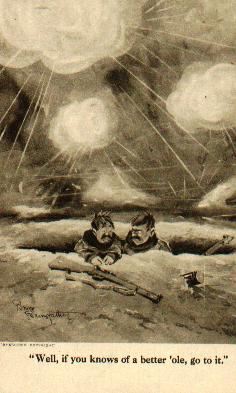
Origin of the Title |
Bruce Bairnsfather was born in Murree in India in 1873 to an army family and was educated at Rudyard Kipling's old school where he proved a poor student - more interested in scribbling caricatures of his masters than in passing his exams. Eventually he scraped through the Army entrance exam and enlisted in the militia - which he hated. He then studied at commercial art school but re-enlisted with the Royal Warwickshires when war broke out in 1914. Serving in the mud and misery of the trenches of the infamous Plugstreet Wood he started drawing cartoons that realistically and yet humorously depicted the appalling conditions of the trenches. They were soon published as the series that came to be known as FRAGMENTS FROM FRANCE and they became an immediate roaring success. Soon his principal character, a phlegmatic, moustachio-ed soldier known as "Old Bill", was immortalized in the famous situation of "The Better 'Ole" and reproduced on pottery, on postcards, playing cards, in books, plays and films, in the UK, North America and, indeed, worldwide. There followed an extraordinary career. Yet Bairnsfather died in obscurity and relative poverty and although Gen. Sir Ian Hamilton called him "The Man Who Won the War' and he was courted by the Secret Service, he received no official award from his country for his evident genius in raising the morale of the nation during the Great War.
Order In Search of the Better Hole at: http://www.guide-books.co.uk/bairnsfather.html
|
|
World War I Headlines
in the
21st Century
|
|
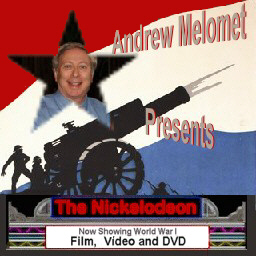 |
The Collector's Edition of
Battle of Britain
Reviewed by Andrew Melomet
|
Battle of Britain, directed by Guy Hamilton, was released in 1969. The film's production was closer to the actual events in the summer of 1940 then we are to the production of the movie. One of the more interesting facts about the Battle of Britain is the involvement of First World War combatants as major decision makers and leaders in the conflict. Many of these individuals are depicted in the movie and the accompanying documentaries on the Collector's Edition 2-Disc Set. Disc 1 has the feature film and commentary by Guy Hamilton, the director, Bernard Williams, the director of the aerial sequences and Peter Annett, the director of the documentary, "Battle for The Battle of Britain." Disc 2 has the "Battle for The Battle of Britain" documentary, three featurettes- "Authenticity in The Air," "A Film for The Few" and "Recollections of An RAF Squadron Spitfire Leader." There's also an animated Photo Gallery. The three featurettes and the commentary were produced in 2004, 35 years after production, so memories are a bit hazy, with some participants not quite sure whether they're watching Messerschmitts, Stukas or Heinkels, but the recollections are usually interesting and after watching all the featurettes and listening to the commentary you do come away with insight into the technically incredibly difficult production.
Air Chief Marshal Sir Hugh Dowding (Laurence Olivier) was the Air Officer Commanding-in-Chief of Fighter Command during the Battle of Britain. Dowding learned to fly in 1913. He got his pilot's ticket with just one hour and 40 minutes in the air! Dowding served with the Royal Flying Corps (RFC) in France in both 6 and 9 Squadrons. In April 1915 he formed the Wireless Experimental Establishment at Brooklands before returning to France to command 16 Squadron. During the Battle of the Somme he commanded the Ninth (Headquarters) Wing. He had differences with Sir Hugh Trenchard, the commander of the RFC, over the issue of pilot exhaustion and their need to rest from constantly flying sorties. Dowding returned to the UK, and until the end of the war he ran the Southern Training Brigade at Salisbury as a Brigadier General.
It was after the war, when he was appointed to the Air Council as Air Member for Supply and Research and as Air Member for Research and Development, that he began to lay the foundations that would become the Fighter Command that would win the Battle of Britain. Dowding was instrumental in the development and production of monoplane fighters armed with multiple wing-mounted machine guns, the Hurricane and Spitfire. He supported the development of Radio Direction Finding (RDF). In 1936 he took command of Fighter Command and continued preparing for the inevitable conflict with Germany. His fighter aircraft received bulletproof windscreens and eventually high-octane fuel. The Observer Corps was developed and he oversaw the integration of the RDF units into a comprehensive communication and control organization that would allow great flexibility in responding to the enemy. The Operations Room of Fighter Command was connected to airfields, communication stations, radar installations and observation posts. A communications network of telephones, radios and teletypes allowed a coordinated response to any enemy attack.
Crippled by arthritis, a wheelchair-bound Dowding appears in the documentary directed by Peter Annett, "Battle For The Battle Of Britain" in a scene where he meets Laurence Oliver playing Hugh Dowding. According to the commentary on the feature film, Dowding, who was very ill at the time of production, willed himself to stay alive to see the final product, dying on February 15, 1970.
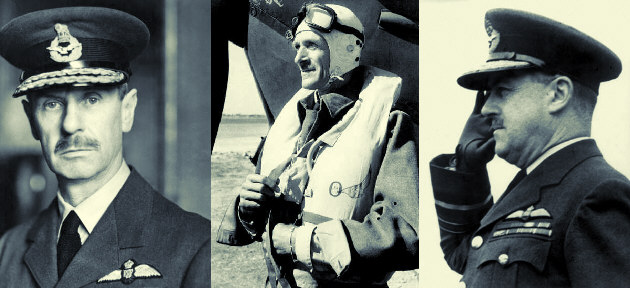
Key RAF Commanders With WWI Experience
Hugh Dowding, Keith Park and Trafford Leigh-Mallory
Air Vice-Marshal Sir Keith Park (Trevor Howard) was the Air Officer Commanding 11 Group, responsible for the defense of London. Park was born in New Zealand and served in the cadets and then joined the army as a Territorial soldier in the New Zealand Field Artillery. He was a gunner at Gallipoli in April 1915 and in July 1915 was commissioned as a Second Lieutenant in the New Zealand Army. In August 1915 he commanded an artillery battery at Suvla Bay and transferred to the British Army, joining the Royal Horse and Field Artillery. He took part in the Battle of the Somme and was wounded in October 1916. He joined the RFC in December 1916 and joined 48 Squadron, flying the Bristol fighter. In August 1917 he was awarded the Military Cross for shooting down one, two "out of control" and damaging a fourth enemy aircraft during a single sortie. He was commanding 28 Squadron at war's end. By the end of the war Park had been shot down twice and was credited with shooting down 20 enemy aircraft--five destroyed and 15 "out of control" (one of these was "shared").
From 1938 to 1940 Park was the senior Staff Officer in Fighter Command and he became Air Officer Commanding 11 Group at the beginning of the war. Park regularly flew his own Hurricane to visit the stations under his command.
Air Vice-Marshal Sir Trafford Leigh-Mallory (Patrick Wymark) was the Air Officer Commanding 12 Group. He joined a Territorial Battalion of the King's (Liverpool) Regiment when the First World War started and received a commission in the Lancashire Fusiliers. He was wounded during the Second Battle of Ypres before joining the RFC in 1916. He flew bombing, reconnaissance and photographic missions with 7 Squadron during the Battle of the Somme. Leigh-Mallory was the commander of an aerial reconnaissance squadron at war's end and was mentioned in dispatches and awarded the Distinguished Service Order. Between the wars he commanded the School of Army Co-Operation for three years and served in the air ministry and overseas before commanding 12 Group. He died in a plane crash in November 1944 while en-route to his appointment as air Commander-in-Chief, South-East Asia Command.
Air Vice-Marshal Evill (Michael Redgrave) flew for the Royal Naval Air Service during the First World War and was awarded the Distinguished Service Cross on June 22, 1916. He served as Senior Sir Staff Officer at Fighter Command through the Battle of Britain, the Blitz and the offensive fighter operations promoted by Leigh-Mallory in 1941.
Dowding and Leigh-Mallory also make brief appearances in Reach for The Sky, the 1956 movie based on the life of Douglas Bader. This title was released on DVD in the UK but not in the U.S.
Reichsmarschall Hermann Göring (Hein Riess), the Luftwaffe Commander-in-Chief served in the army in World War I as an infantryman. He suffered from rheumatoid arthritis of the knees and tried to transfer to the Air Service but was unsuccessful due to low test scores. He was able to join the Air Service in his second attempt with the help of Bruno Loerzer, with whom he served as an observer. By the end of the war, Göring was commanding the Richthofen Jasta and had 22 enemy aircraft to his credit. After the war Göring worked as a pilot for the Fokker Company and flew for Svenska Lufttrafik.
Hein Riess was a musical star. According to a Battle of Britain publicity booklet, he had actually met Göring during the war.
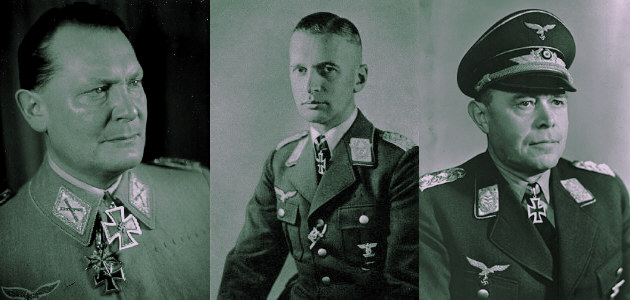
Key Luftwaffe Commanders With WWI Experience
Herman Göring, Hans Jeschonnek and Albert Kesselring
Generalfeldmarschall Albert Kesselring (Peter Hager), Commander of Luftflotte (air fleet) II was an artillery man in the Great War, serving under Prince Rupprecht in the 2nd Bavarian Foot Artillery Regiment. He transferred to the German Air Service and trained as an observer. It was in the German air Service that he became a close friend of Göring. Kesselring learned to fly late in his military career at age 48 and transferred to the Luftwaffe in 1933. Luftflotte II was the larger of the two Luftflottes in Western Europe and was the nearest Luftflotte to Britain.
Generalfeldmarschall Erhard Milch (Dietrich Frauboes), Inspector General, Luftwaffe also appears in the documentary "Battle for The Battle of Britain" commenting that Göring didn't take his advice on how to fight the Royal Air Force. Milch was originally an artillery officer in the German Army during World War I. He joined the Luftstreitkrafte (Air Service) and was trained as an observer. He commanded a squadron at the end of the war. He worked in the German airline industry in the postwar period and became the first managing director of Deutsche Luft Hansa. In 1933 he became State Secretary for the Reichsluftfahrministerium (Reich's Aviation Ministry-RLM) and was instrumental in the development of the Luftwaffe.
General Hans Jeschonnek (Karl-Otto Alberty), Luftwaffe Chief of Staff, flew with Fighter Squadron 40 in 1917 and was credited with shooting down two aircraft.
Many of the scenes for Battle of Britain were filmed at Duxford airfield. Three of the double-bay timber-trussed hangars originally built during the Great War are still standing at Duxford, which is the site of the RAF Museum. During the First World War Duxford was a Training Depot Station, and newly recruited American air mechanics trained there starting in March 1918 before going to France to join operational squadrons.
Other Battle of Britain films of interest include The Lion Has Wings, First of the Few, Angels One Five and Dark Blue World. All are available on DVD in the U.S. but be warned that the public domain copies of First of the Few AKA Spitfire are of very bad quality. The British television productions A Perfect Hero and Piece of Cake are also available on DVD in the U.S.
One of the more bizarre Battle of Britain movies is the 1970 Italian production, La Battaglia d'Inghilterra AKA Eagles Over London AKA Stukas Uber London. The plot features a group of German commandos who take uniforms from dead British soldiers at Dunkirk and sneak into England to destroy the vital radar network for defense during the Battle of Britain. This title was released on DVD in the U.S. as part of the Dogs O'War Collection: WWII - The European Front 10 Film Set
Click here to download the 2004-2008 Index for the Nickelodeon
with Updates on Availability of Films and Videos in the U.S.
Check the Archives for 2009's reviews.
|
|















 Memorable Event
Memorable Event

